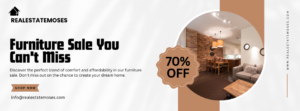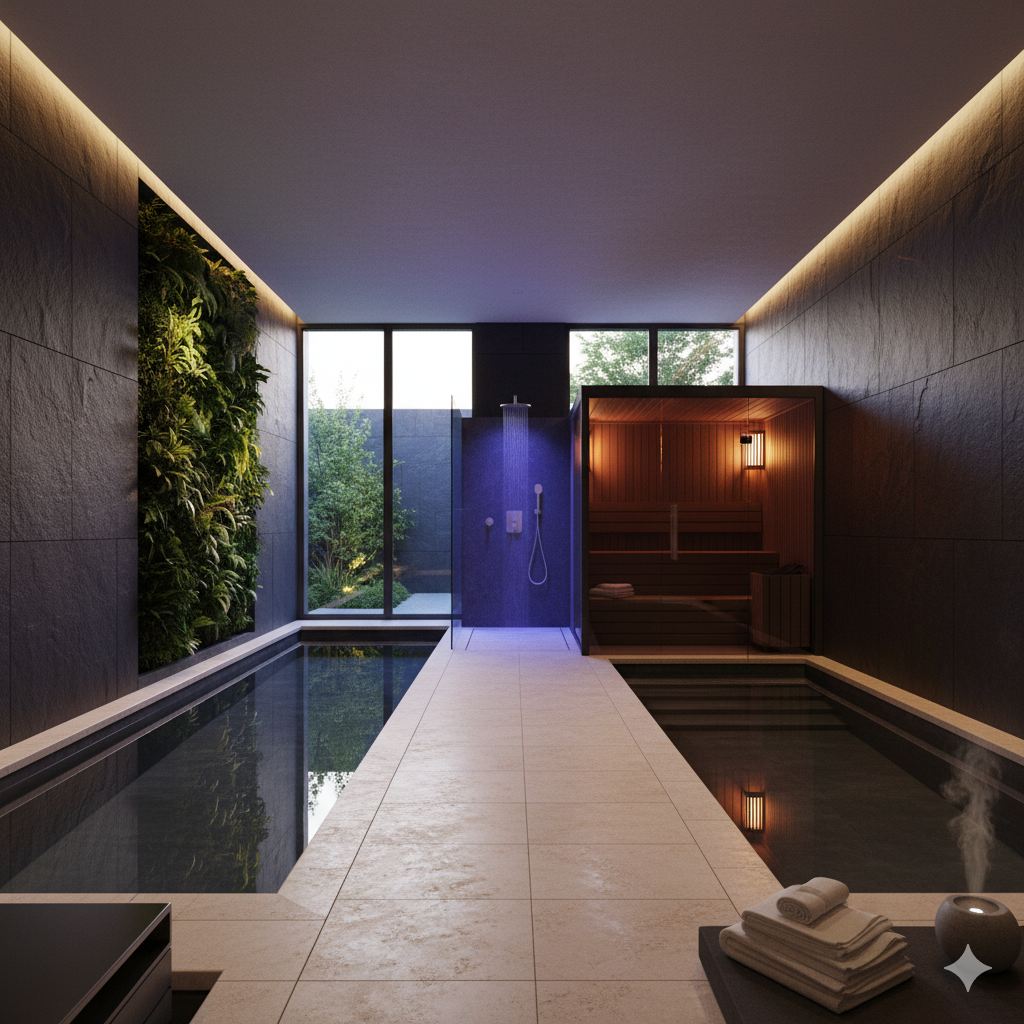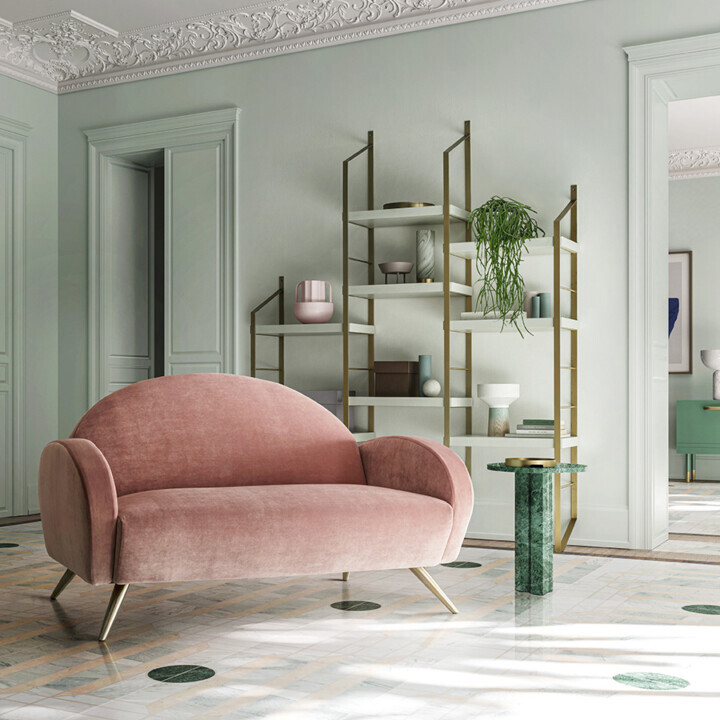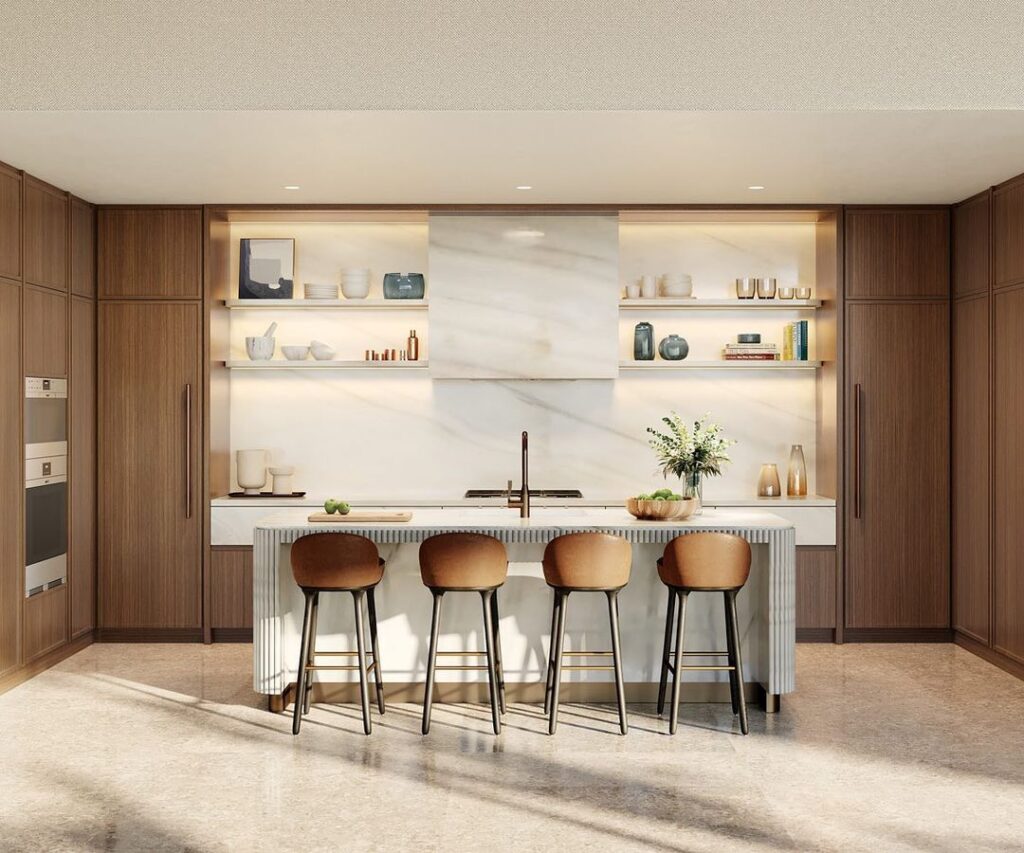The world of ultra-high-net-worth living is not driven by fleeting fashion, but by a considered, forward-looking philosophy. For those who can commission anything, the most valuable commodity is an authentic, personalized environment that supports an exceptional life. As a firm specializing in bespoke residential design, we see the future of opulence not in simple extravagance, but in a profound marriage of wellness, sustainability, and unparalleled craftsmanship.
The 2025 Luxury Interior Design Trends are moving decisively away from conspicuous consumption and toward quiet, intentional luxury. The focus is less on what a home costs and more on what it enables: a healthier body, a clearer mind, a seamless connection to nature, and an effortless life powered by invisible technology.
This in-depth guide is an advisory look at the pillars of design shaping the most exclusive residences in the world. We will explore how billionaires are translating their values and lifestyles into the very architecture of their homes.
The New Trifecta of Opulence: Customization, Wellness, and Responsibility
The foundational shift in 2025 Luxury Interior Design Trends rests on three non-negotiable elements that are redefining what a luxury home must offer.
1. Bespoke Everything: The Quest for the One-of-a-Kind
For the high-net-worth individual, owning something unique is the ultimate expression of luxury. In 2025, mass-produced items, even high-end ones, are being rejected in favor of the truly bespoke. This is customization taken to an architectural extreme.
A Handcrafted Narrative
The trend is to treat the home not as a showroom, but as a deeply personal gallery of collected experiences. Every piece of furniture, every light fixture, and every slab of stone is chosen or created for a specific reason.
- Artisanal Cabinetry and Paneling: Think beyond standard custom millwork. Designers are collaborating with master woodworkers to integrate custom-carved details, rare reclaimed woods, and intricate metal inlays into walls and storage units. The walk-in closet is no longer just a room for clothes; it is a meticulously designed “retail boutique” featuring glass-fronted displays, bespoke lighting to highlight collections, and tailored spaces for everything from watches to handbags.
- Sculptural Lighting as Fine Art: Functional lighting has become sculptural art. Grand, custom-made chandeliers inspired by nature or abstract concepts, and minimalist track lighting systems that are carefully curated to enhance the home’s art collection, are paramount. The lighting itself is a conversation piece.
- Custom Stone Fabrication: The choice of natural stone is dramatic and intensely personal. Forget simple white marble. The trend leans towards exotic quartzites, boldly veined black and green marbles, and large-format porcelain panels with seamless designs. These materials are used not just on countertops, but as entire feature walls, grand fireplace surrounds, and even as sculptural bathroom elements, with minimal grout lines for a monolithic, high-art feel.
The common thread in these 2025 Luxury Interior Design Trends is that nothing is off-the-shelf. The home is an original commission, an authentic reflection of its owner’s singular identity.
2. The Wellness Wing: Architecture for Mind and Body
The modern billionaire’s mansion is a sanctuary built to foster health and longevity. Wellness is no longer an afterthought—a treadmill tucked into a spare room—it is an integrated architectural principle. The home itself is designed to improve the occupant’s well-being.
- Integrated Spa Sanctuaries: The spa-like bathroom has matured into a comprehensive wellness suite. We are seeing full-scale amenities like infrared saunas, cryotherapy chambers, and dedicated plunge pools (both hot and cold) seamlessly integrated into the master suite or a designated wellness wing. Showers are experiential, featuring steam functions, aromatherapy, chromotherapy lighting, and multiple rainfall and body jets.
- Biophilic Design: Connecting to the natural world is a powerful trend. Biophilic design, which incorporates nature into the living space, is essential. This manifests through living green walls, indoor water features that provide ambient sound, and the pervasive use of natural, organic materials like warm timber, raw stone, and earth-toned textiles. Floor-to-ceiling glass walls, often retractable, are used to frame breathtaking exterior views and flood the interior with natural, circadian lighting that adjusts to the body’s natural rhythm.
- Air and Water Purity: Clean air and water systems are now a base expectation, not a premium upgrade. Advanced air filtration systems, water purification for the entire house, and non-toxic, low-VOC materials are key design choices that create a genuinely healthy indoor environment.
The priority is clear: the most exclusive homes of 2025 are designed to be personal resorts where the pursuit of health is effortless.
3. Sustainability as the Ultimate Status Symbol
For the discerning homeowner, true luxury in 2025 cannot be separated from responsibility. The most expensive new builds are often net-zero or highly energy-efficient, proving that one can have opulence and an environmental conscience. This ethical approach is a cornerstone of the 2025 Luxury Interior Design Trends.
- Invisible Eco-Tech: Sustainable features are no longer unsightly add-ons. Solar panels are seamlessly integrated into the roofline, often completely hidden. Geothermal heating and cooling, advanced rainwater harvesting systems, and smart energy management platforms are all incorporated invisibly. The luxury is in the system’s performance, not its visibility.
- Sustainably Sourced Materials: The preference is for rare materials that are also ethically and sustainably sourced. This includes reclaimed wood, low-impact luxury textiles, and high-performance, long-lasting materials that minimize the need for replacement. The philosophy is about building to last for generations.
- Connecting Indoors and Out: The seamless transition to integrated outdoor living spaces—covered outdoor kitchens, luxurious lounges with automated screens, and heated infinity pools—is a sustainability trend, as it encourages homeowners to spend time in the low-energy consumption exterior spaces.
Technological Marvels: The Discreet and Intuitive Home
The technological marvels defining 2025 Luxury Interior Design Trends are moving from being noticeable gadgets to being completely discreet, intuitive, and human-centered. Technology should serve the lifestyle, never dictate it.
Invisible Integration and AI-Powered Living
The home is an intelligent entity, but the hardware is hidden. Speakers are built into the walls, outlets are concealed, and interfaces are minimal.
- Human-Centric Automation: Artificial Intelligence is now used to learn the owner’s habits and preferences. The home anticipates needs: the lighting dims and warms as the sun sets, the temperature adjusts minutes before the owner arrives home, and the security system recognizes family members and sets a personalized ‘welcome’ scene.
- Advanced Security and Privacy: The most advanced security systems employ facial recognition for entry and biometrics for access to private areas like wine cellars or vaults. This level of security is seamless and hidden, offering peace of mind without the visual clutter of traditional systems.
- The Smart Kitchen Complex: The luxury kitchen has evolved into a multi-functional complex. The main kitchen is often an exhibition space for entertaining, featuring showpiece islands and top-tier architectural-grade appliances. Tucked discreetly out of sight is the scullery or catering kitchen, a fully equipped workspace designed for private chefs, meal prep, and cleanup. Appliances are state-of-the-art, including induction cooktops, high-performance wine preservation systems, and automated storage.
The Ultimate Entertainment Hubs
Entertaining at the highest level requires dedicated, no-compromise spaces.
- The Private Cinema: Ultra-luxury home theaters feature custom-tuned acoustics, 8K projection systems, and deeply plush, custom-reclining seating. The design is less about a commercial cinema and more about a private, perfectly executed viewing lounge.
- Luxury Playgrounds: Mansions increasingly feature dedicated ‘fun’ spaces: private e-sports arenas, bespoke golf and sports simulators, two-lane bowling alleys, and elaborate wine and whiskey tasting rooms with climate-controlled, glass-walled cellars.
Materiality and Texture: The Sensory Experience
In the realm of 2025 Luxury Interior Design Trends, the sensory experience is paramount. Materials are chosen for their tactile richness and visual depth, creating environments that feel luxurious to the touch and soothing to the eye.
Curated Color and Rich Texture
While classic neutrals remain a foundation, new trends are emerging to add depth and drama.
- Moody and Rich Palettes: Dark, dramatic hues are making a bold comeback. Deep charcoal grays, rich navy blues, and sophisticated emerald greens are used in feature rooms—often libraries or private lounges—to create a sense of depth and intimacy. These are frequently contrasted with warm metallic accents like brushed brass and satin gold.
- The Comfort of Curves: Sharp, stark lines are being softened by curved architecture and furniture. Arched doorways, rounded walls, and deep-seated, casually comfortable furniture with organic shapes are creating welcoming, flowing spaces. Bouclé, velvet, and textured linens are layered to enhance comfort and visual interest, turning grand rooms into cozy havens.
- Art-Driven Interiors: Art is integrated into the architecture itself. Curated art walls, often featuring digital or rotating physical displays, serve as focal points. The interior design functions as a sophisticated backdrop, ensuring that the homeowner’s prized collection is showcased with museum-quality lighting and presentation.
The Power of Exotic Stone
The use of stone is more prominent than ever, chosen for its rarity and expressive power.
- Statement Slabs: Exotic stones like onyx, travertine, and semi-precious quartz are dominating kitchens, bathrooms, and grand entryways. The intent is to use massive, seamless slabs to display the stone’s unique natural pattern—a geological work of art.
- Mixed Materials: A masterful mix of contrasting materials defines this trend: plush textiles paired with raw, textured concrete; high-sheen metals against matte woods; and dramatic, dark stone with clear, expansive glass. This textural layering provides a richness that simple uniformity cannot achieve.
Architectural Grandeur and Private Retreats
The design philosophy for the most exclusive homes of 2025 is to balance public grandeur with private sanctuary. The home must impress guests while simultaneously providing a peaceful, secluded haven for its residents.
Grand Entrances and Defined Spaces
While open-plan living remains popular for common areas, the trend is toward open-concept living with defined zones.
- Formal Conversation Spaces: In contrast to the casual family room, there is a revival of formal, smaller spaces designed for focused conversation, often featuring grand libraries or sophisticated dens. These rooms emphasize intimate connection, free from the distractions of integrated technology.
- The Luxury Master Suite: The master bedroom and its surrounding area are designed as a completely private retreat. The suite often includes its own lounge, a private office, an integrated spa bathroom, and access to a secluded outdoor area. This zone is a decompression chamber, separate from the home’s main social and entertainment hubs.
Beyond the Walls: Rooftop and Subterranean Design
Billionaires are utilizing every cubic meter of their property, extending the living space both upward and downward.
- Subterranean Amenities: To maximize land use and privacy, subterranean levels are being utilized for the ultimate amenities. This includes subterranean parking for vehicle collections (auto vaults), shooting ranges, and even vast entertainment centers, all accessible via private elevators.
- Rooftop Escapes: Rooftop amenities are growing in popularity, often featuring private gardens, cocktail lounges, and full-service pools that offer spectacular, private views of the surrounding landscape or city skyline.
Final Advisory: The Enduring Value of Authenticity
The overwhelming theme across all 2025 Luxury Interior Design Trends is a move toward authenticity and intentionality. The most valuable homes are those that tell a clear, original story about the people who live within them.
For those planning a new build or a significant renovation, the advice is simple: reject the formulaic in favor of the personal. Work with designers and architects who prioritize bespoke craftsmanship, seamless technological integration, and a profound commitment to wellness and sustainability. The true measure of luxury in the coming years will not be found in sheer square footage, but in the quality of the life the space supports. Investing in these authentic, enduring 2025 Luxury Interior Design Trends ensures a home that is not just opulent for today, but truly timeless for tomorrow.
Moses Oyong is a luxury real estate advisor with a passion for arts and culture, music, fashion, and all things luxurious. With a keen eye for beauty and attention to detail. I strive to help my clients find their dream homes that reflect their unique sense of style and taste whilst providing them with the right information to ease the stress of the decision-making process.




